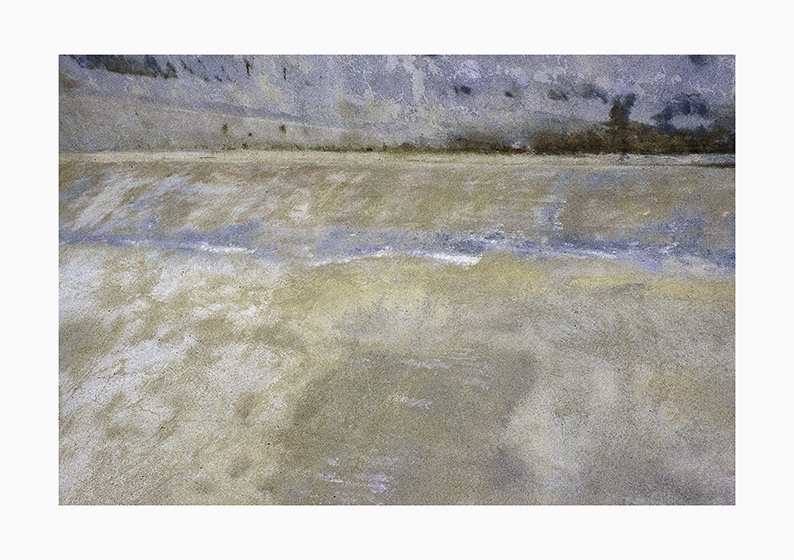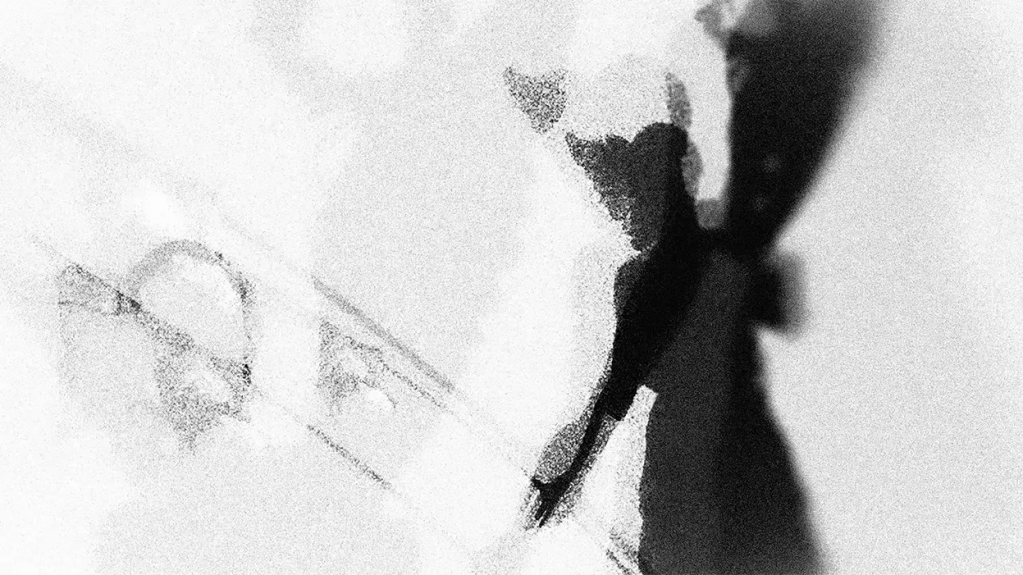
A while back, some old 35mm photographs resurfaced of my secondary school’s production of the musical, Calamity Jane, in which I played the comedic role of Francis Fryer – a vaudeville act booked to perform in a spit-and-sawdust saloon bar – The Golden Garter – for a rowdy audience of cowboys. The joke, of course, is ‘Francis Fryer’ is assumed to be a female performer, an assumption resulting in an impromptu drag act and a rather risque musical number that goes, ‘I’ve got a hive full of honey for the right kind of honey bee’…

Francis Fryer’s Y chromosome comes as a shock in the 1953 film, Calamity Jane.

Francis Fryer (Dick Wesson) in drag performing on the stage of The Golden Garter, Calamity Jane (1953)
I was fourteen when I got the part of Francis Fryer. It’s 1989 and the annual school production is the highlight of the academic year. I only have very positive memories of my involvement in Calamity Jane. I remember being taught to walk in high heels by the deputy headmistress, which I enjoyed thoroughly, not because of the opportunity to click about in a woman’s shoes, but, more boringly, because I somehow valued this new informality between myself and this otherwise formidable adult. It was special-making and highly unusual, as intimate and demystifying as hearing teachers use each other’s first names with one another. I felt brought closer to the world of adults, a world I instinctively preferred over the inelegancies and bun-fights of my own age-group.
I remember very distinctly the dress rehearsal, when all the hired-in costumes arrived at the school, and I saw Francis Fryer’s saloon girl costume for the first time, an extraordinary confection of red and black satin, with a swishing fishtail at the back and only the tiniest scallop of fringed fabric hanging down at the front. Even now, I can conjure-up the prickle of mortification accompanying the moment I was given my notes by the director after the first dress rehearsal: “Philip,’ he said, ‘If you’re going to do that with your legs, you need to wear black pants.’

It’s tempting to frame this story as the moment I knew I was gay, that somehow the touch of red and black satin riveted me at once to my sexual identity; or it was those high-heel shoes, or the tights, the wig, or the ticklish slink of my red feather boa. It wasn’t like that at all. There was no such realisation or great awakening, no light-bulb moment or epiphany. The act of dressing-up as a woman didn’t feel encoded for me, or provocative, or transgressive. It was just what the character had to do in the story and that was that.
But it did make me feel special in one very obvious way: the role of Francis Fryer, and specifically his drag act, was a sure-fire way of making people laugh, and people did laugh, not least because during one performance the black sequinned garter on my left thigh became entangled with the fish tights on my right, effectively tying my legs together for the duration of my musical number. I waddled through my routine, penguin-like, while mugging furiously at the front row of the audience, mining my wardrobe malfunction for maximum laughs.
The whole point of Francis Fryer’s drag act is that it’s not very good – and I wasn’t – but that just brought the cheering and the applause. Off-stage, I was likely awkward as a foal, and always painfully self-conscious at how skinny I was, but on stage I was ‘a character actor’, a physical comedian! On stage – with those legs in those tights! – I looked ridiculous and that was power.
So no, I didn’t feel switched-on sexually in my saloon girl dress, but I did feel powerful. I had audiences eating out of my hand, knowing one bit of silliness with knock-knees and a feather boa would bring down the house. When you entertain people, when you clown for them, they reward you with affection. I felt liked. I felt popular. It was wonderful really, stealing the show from all those much better-looking boys. I knew I wasn’t leading man material, but I was the funny one.


But when I look at these photographs of that same time, my feelings are more complicated and it’s this I sought to capture in my unexpectedly personal response to the most recent Kick-About prompt.
When I look at the juvenile forms of the cicada, I experience instinctive distaste and also fascination. I feel similarly about these images of my own larval self. I experience some distaste at my physical appearance back then in the way we all recoil a bit – unremarkably – when we see images of our younger selves. This isn’t an admission of body dysmorphia or deep self-loathing, but only the truth of things. More uniquely perhaps, I experience distaste because of what I know awaits the boy in the photographs, and how the reappearance of these images returns me to a period of my life I have no wish to revisit.
This isn’t quite true actually; when I look at these photographs I do want to revisit this exact place and time – to warn, to mentor, to coach, and to save – but I know I can’t. Ultimately, that is what I find so unwelcome about these images; my powerlessness to intervene.
He doesn’t know it yet, but the boy in the dress in the photograph is going to be bullied by other boys. He is not going to tell anyone about it, because that is what boys do. He doesn’t know it yet, but the boy in the dress in the photograph is very likely embarrassing the other men of his family. Perhaps they can see something getting started in him – some adult-form coalescing – an anomaly. It’s surely what his bullies are seeing too. Funnily enough, the boy in the dress in the photograph doesn’t seem to be able to see this same thing as keenly. The boy thinks he’s popular with everyone. He is the centre of attention suddenly because he is making people laugh. Turns out, people are laughing at him a bit too, but not because he’s funny haha, but because he’s odd, peculiar, different, not cool, not hard, not savvy, not a success at being a fourteen year old boy.
Oh dear! The boy in the dress in the photograph doesn’t even realise, in dressing up as a woman and appearing to enjoy it, he’s upsetting and disappointing people. Some might even say a fourteen year old boy who chooses to put on a saloon girl’s dress, who learns to walk in high heels, is asking for a certain kind of trouble.
But you see, the bullies, and all the other disappointed men, are right about him – their suspicions will be realised. The boy in the dress in the photograph, who may as well be neutered for all the interest he is showing in matters of sex and sexual relationships, will, in time, emerge from his chrysalis – or rather his closet. We are looking at the nymph of an adult gay man in this photo, but everything about this individual’s gestation will be slow, and his final form not butterfly-like or in any sense spectacular. No, rather like the cicada itself, he will have to settle for ‘interesting’ over ‘beautiful’.
The boy in the dress in the photograph will soon learn to cocoon himself. He will grow a little more inward and ever more watchful. He will separate himself off from some of the men who find him disappointing by creating a shell and moving inside it for as long as it takes to feel ready enough to leave it again. The boy will do other things to keep himself safe, and not all of them will be kind or generous or brave or entirely honest.
So it is I came to the creative decision to use these happy/unhappy photographs as the raw material from which to fashion a collection of pupa, collaging with them digitally, using the same limited number of Photoshop manoeuvres last wheeled out in my Metropolis images. The decision to present the resulting images as faux zoological plates came from an idea I had about just how old these photographs feel to me – like relics, or fossils, museum pieces certainly – but also to communicate something of my scrutiny for this subject; the way distaste can give way to curiosity, and curiosity to an acceptance of the form things take on their way to being other things, and the time it takes, and also, I suppose, to marvel at the instinct to survive, and in the end, to do more than this.








Leave a comment